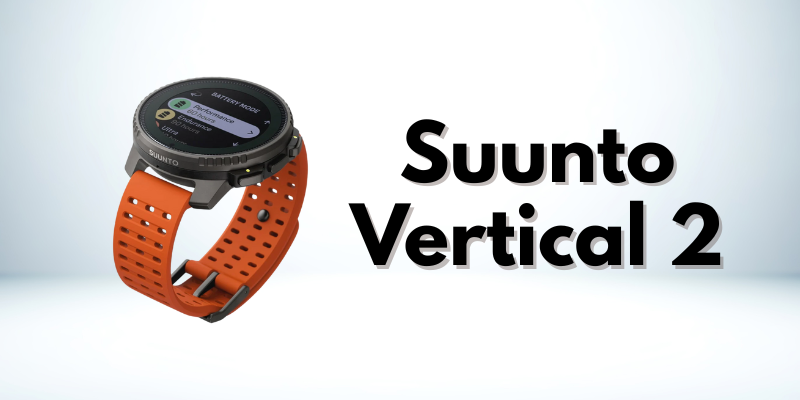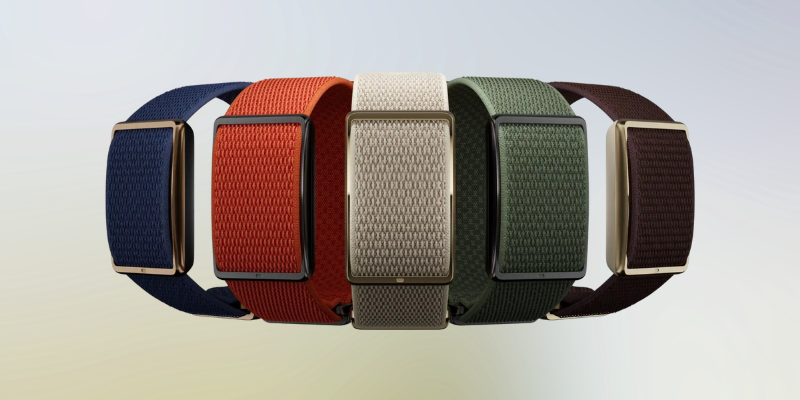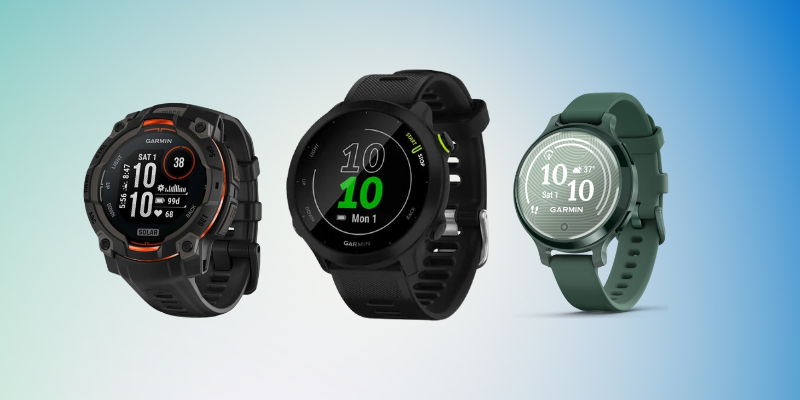Suunto Vertical 2 review

The Suunto Vertical 2 is significant evolution in outdoor watch technology, finally transitioning to a vibrant AMOLED display after decades of MIP screen dominance. This impressive GPS watch doesn't just look better - it performs remarkably better too.
With an extraordinary 65 hours of dual-frequency GPS tracking and up to 20 days of battery life in smartwatch mode, this device is engineered specifically for serious adventurers. Furthermore, the addition of an integrated LED flashlight with multiple brightness levels and red light capability makes it a genuinely practical tool for outdoor pursuits.
Compared to its predecessor, the Vertical 2 offers substantial improvements - faster maps, brighter display, and perhaps most surprisingly - a lower price point versus the original. Even in extended use scenarios, the watch provides battery options reaching up to 250 hours in Tour mode.
Throughout this review, we'll examine how the Suunto Vertical 2 performs across various outdoor conditions, whether its upgraded heart rate sensor delivers on its promises, and if this well-equipped contender truly represents good value for money in the competitive outdoor watch market.
If you're looking for accessories, then check out our collection of Suunto straps, screen protectors, chargers, and more.
What is Suunto Vertical 2 and who is it for?
The Suunto Vertical 2 positions itself as the flagship model in Suunto's lineup, developed primarily for adventurers who venture far from established trails and cellular coverage. This advanced smartwatch builds upon the foundation of its predecessor while introducing several significant improvements that cater to specific user groups and activities.
Target audience: Outdoor athletes and adventurers
The Suunto Vertical 2 is designed for those who require extended reliability in challenging environments. At its core, this watch targets ultra-runners, hikers, mountaineers, and expedition enthusiasts who demand equipment that can withstand extreme conditions. The device particularly appeals to athletes participating in events like the Ultra-Trail du Mont Blanc (UTMB), where notably 11 of the top 20 male and female runners chose Suunto watches.
Essentially, the Vertical 2 seems most suitable for:
- Trail runners tackling ultra distances with significant elevation gains
- Mountain adventurers requiring reliable navigation in remote areas
- Multi-sport athletes who train across various outdoor disciplines
- Individuals seeking a rugged yet premium daily wear option with expedition-ready capabilities
Accordingly, the watch comes equipped with over 115 sport modes, covering activities from trail running and backcountry skiing to mountain biking and swimming. This versatility suggests the device aims to serve as a comprehensive companion for serious outdoor enthusiasts rather than casual fitness trackers.
Key differences from Suunto Race 2 and Vertical 1
The Vertical 2 marks a significant shift from its predecessor by abandoning the MIP display technology in favour of a brighter 1.5-inch AMOLED LTPO display with 466x466 pixel resolution and 2,000 nits brightness. Additionally, the new model introduces Suunto's first-ever integrated LED flashlight, whilst notably removing the solar charging capability present in the original Vertical.
When compared to the Race 2, which shares many features, the Vertical 2 offers:
- Extended battery life: 65 hours in dual-frequency GPS mode versus 50 hours in the Race 2
- 20 days of smartwatch use compared to 18 days on the Race 2
- A more robust build with increased metal construction (the Race 2 uses plastic lugs)
- Traditional button-only navigation rather than the Race 2's digital crown
- Slightly thicker profile at 13.3mm versus 12.5mm on the Race 2
Under the hood, the Vertical 2 benefits from a new MCU that doubles processing speed and substantially increased memory for future software updates. The charging system has also been redesigned for improved functionality.
Design philosophy and use case focus
The Suunto Vertical 2's design philosophy is centred on reliability and durability for extended expeditions. The watch boasts water resistance to 100m and a rugged build that can withstand scrapes during rocky ascents. Available in either titanium or stainless steel, the watch weighs between 74g-87g depending on the chosen material.
Unlike many contemporary smartwatches that emphasise touchscreen controls, the Vertical 2 maintains three large physical buttons that can be operated while wearing gloves, highlighting its focus on practical field use rather than urban convenience. This approach underscores Suunto's commitment to creating tools for genuine outdoor use cases.
The emphasis on multi-day expeditions and self-supported adventure racing manifests in the device's navigational capabilities. The watch offers free high-detail offline maps, dual-band GPS, sport-specific heatmaps, and climb guidance that helps plan for elevation changes. These features collectively suggest the Vertical 2 aims to be an essential tool for those who regularly venture into unfamiliar or challenging terrain.
Display and build: AMOLED upgrade and rugged design
The switch to AMOLED technology represents a watershed moment for Suunto, marking the end of a decades-long tradition of using MIP displays in their outdoor watches. This substantial upgrade to the visual interface appears to be the most immediately noticeable enhancement on the Vertical 2, bringing it in line with contemporary smartwatch expectations.
AMOLED screen: 1.5" LTPO, 2000 nits brightness
At the heart of the Vertical 2's visual experience sits a vibrant 1.5-inch AMOLED LTPO display with an impressive 466x466 pixel resolution. The screen offers exceptional brightness capabilities, reaching up to 2,000 nits, which seems to address one of the primary concerns outdoor enthusiasts face - visibility in bright sunlight.
The LTPO (Low-Temperature Polycrystalline Oxide) technology appears to play a crucial role in the device's power management. This display technology enables variable refresh rates, consequently improving overall battery efficiency. For everyday use, the screen functions in two primary modes: an always-on setting that displays a dimmed watchface when the wrist is lowered, and a full-brightness mode that activates upon raising the wrist.
Despite concerns some users might have about AMOLED visibility outdoors, the Vertical 2 performs admirably in this regard. The high-brightness capability means that even in Mediterranean sunshine, as mentioned in testing feedback, users report zero visibility problems. The display remains protected by the same sapphire crystal glass that featured on the original Vertical model.
Build materials: Titanium vs Stainless Steel
The Suunto Vertical 2 maintains its predecessor's rugged outdoor aesthetic while offering two distinct material options:
-
Titanium version: Weighing approximately 74g, this lighter option appears to offer superior durability and hypoallergenic properties. Available in black or sage colorways.
-
Stainless Steel version: Slightly heavier at 87g, this option comes in black, pine green, arctic grey and gunmetal finishes. Despite the weight difference, both materials are engineered to withstand shocks, scratches and extreme conditions.
One notable design element is how the Vertical 2 incorporates more metal in its construction than the Race 2. Whereas the Race 2 uses plastic for its lugs and case sides, the Vertical 2 features metal throughout these areas. Both versions maintain the same case dimensions as the original Vertical—49mm diameter and 13.6mm thickness.
The build quality reflects Suunto's focus on durability for serious outdoor use. The watch carries a 100-metre water resistance rating, and user reports suggest excellent resistance to saltwater exposure, with several months of Mediterranean swimming producing no signs of corrosion on the stainless steel version.
Button interface vs digital crown
In an era where many smartwatches are moving toward touch-centric controls and digital crowns, the Suunto Vertical 2 maintains a traditional three-button interface. This design choice appears deliberately aimed at practical outdoor usability rather than aesthetic modernisation.
The three physical buttons allow for reliable operation in challenging conditions—such as when wearing gloves or during heavy rainfall—where touch controls might prove problematic. Moreover, users familiar with outdoor-focused watches may appreciate this consistent interface that doesn't require adaptation to new input methods.
Although the Suunto Race series implements a digital crown for navigation, feedback suggests that many outdoor enthusiasts prefer the button-based approach for sport usage. The simplicity and reliability of physical buttons seem especially valuable during intense activities where precise, tactile control matters more than elegant scrolling.
The interface design philosophy appears to prioritise functional reliability over novel interaction methods, reinforcing the Vertical 2's positioning as a serious tool for outdoor pursuits. Throughout extended adventures in challenging environments, this pragmatic approach to user input may prove more dependable than more sophisticated but potentially finicky alternatives.
Battery life and real-world endurance testing
Battery life remains the cornerstone of any serious outdoor adventure watch, and the Suunto Vertical 2 seems to excel in this critical area even though it utilises an AMOLED display that typically consumes more power than traditional MIP screens.
GPS battery modes: Performance, Endurance, Ultra, Tour
The Suunto Vertical 2 offers four pre-defined battery modes that cater to different adventure scenarios and duration requirements:
- Performance mode: Delivers up to 65 hours of training time with the highest GPS accuracy using multi-band GNSS
- Endurance mode: Extends to approximately 75 hours using all-systems single-band tracking
- Ultra mode: Pushes battery life to 110 hours with all-systems single-band GPS but no wrist heart rate monitoring
- Tour mode: Maximises longevity to an impressive 250 hours by reducing GPS accuracy and turning off heart rate monitoring
Interestingly, users can create custom battery profiles for specific sports, which proves useful for activating the touch display during recordings—a feature turned off by default in all standard battery modes. The watch intelligently remembers your last battery mode selection for each sport activity, suggesting it upon future use.
Nevertheless, it's worth noting that using maps significantly increases battery consumption beyond the stated figures, regardless of the selected mode. The watch adjusts GPS accuracy across these modes, with 'Good' GPS accuracy in Endurance mode corresponding to 'Best' accuracy in previous Suunto models like the 9 Peak Pro.
20-day smartwatch mode: Daily usage expectations
For everyday use without training activities, the Vertical 2 claims up to 20 days of battery life with daily heart rate monitoring enabled and display activation on wrist-raise. This extends to approximately 30 days when heart rate monitoring is disabled.
However, real-world experiences appear somewhat variable. Some users report getting between 12-14 days of battery life with approximately 7.5% drain per day in standard conditions. In contrast, other reviewers describe the Vertical 2's battery performance as "great" and "far exceeding" older competitor models like the Garmin 7X.
Given that the watch supports over 115 sport modes and is designed to track various activities from trail running to swimming, battery consumption inevitably fluctuates based on usage patterns. The sophisticated AMOLED screen seems to be efficiently managed through LTPO technology, which helps maintain competitive battery life despite the brighter display.
Navigation and mapping features in practise
Navigation stands at the core of any serious outdoor watch experience, with the Suunto Vertical 2 offering several tools that aim to guide adventurers through challenging terrain. The watch combines detailed mapping capabilities with elevation tracking to create a comprehensive navigation system, yet it's not without limitations.
Offline maps and route syncing
The Vertical 2 relies entirely on downloadable maps rather than pre-loaded cartography. Users must select regions through the Suunto App and download them via WiFi connection before venturing outdoors. This approach works efficiently when familiar with official regional names but may prove challenging when planning trips to unfamiliar territories where county/regional designations aren't immediately recognisable.
Route management appears somewhat restricted, with users reporting a limit of approximately 10-12 routes stored simultaneously on the device. This limitation seems peculiar considering the watch contains 32GB of storage—enough capacity to theoretically house thousands of routes. For athletes who frequently explore different areas, this constraint might necessitate regular route management.
Routes can be imported from popular platforms like Strava and Komoot or created within the Suunto App. After syncing, these routes display prominently on the watch's map interface, showing both the planned path and current position. The map offers multiple viewing styles including outdoor, high contrast, and dark modes to suit different lighting conditions.
Climb guidance and elevation tracking
The climb guidance feature stands out as a particularly useful tool for trail runners and hikers. The watch automatically categorises route sections into five distinct types: flat, uphill, downhill, climb, and descent—each marked with corresponding colours in the Suunto app. This colour-coding system helps users mentally prepare for upcoming terrain challenges.
When navigating, the watch displays comprehensive elevation data including current altitude, total ascent/descent completed, and remaining elevation gain. As users approach significant climbs, the device can provide notifications about the upcoming gradient changes. For each section, detailed metrics appear such as average grade, distance remaining, and elevation statistics.
Turn-by-turn navigation and off-route alerts
Turn-by-turn navigation on the Vertical 2 has received mixed feedback from users. By default, this feature must be manually enabled for routes imported from third-party platforms - requiring users to copy the route and toggle the turn-by-turn prompt. Some users describe the implementation as "nothing short of a disaster" due to constant, frequently unnecessary notifications that interrupt the map view.
Many complaints centre around confusing timing of directional prompts, with messages like "turn left in 97m" appearing incessantly and sometimes overlapping with other notifications. This bombardment of alerts proves especially problematic on technical terrain where concentration is paramount.
Subsequently, if straying off course, the Vertical 2 displays a prominent yellow banner indicating deviation from the planned route. Users report this alert system as more aggressive than competitors', ensuring awareness of navigation errors.
Limitations in re-routing and map zoom
First and foremost, unlike some competitors, the Suunto Vertical 2 lacks offline re-routing capabilities. While it can display offline maps and provide pre-generated turn notifications, it cannot calculate new routes on the fly when deviating from the original path. The maps function essentially as "pictures with no sense of where junctions are".
Users have additionally reported occasional issues with map rendering after downloads, sometimes requiring watch restarts to resolve. The zoom functionality extends from 200 metres down to 25 metres, with touchscreen support for map panning. Yet, after 5 seconds without touch interaction, the map automatically recorders to the current location.
For scenarios where routes cross themselves (like figure-8 paths), users must remain vigilant of their breadcrumb trail, as the watch assumes any direction change at crossings is intentional. This limitation requires more active navigation awareness from users at complex junctions.
Flashlight and utility features: A closer look
Among the most practical additions to the Suunto Vertical 2 is its integrated LED flashlight system, marking the first time this utility feature appears in the company's lineup. Previously, Suunto watches relied solely on using the screen as a light source, yet the Vertical 2 breaks new ground with dedicated LEDs built directly into the bezel.
LED flashlight brightness levels and modes
The flashlight setup consists of three distinct LEDs: two white and one red, thoughtfully integrated into the watch bezel. For the white light function, users can adjust between four brightness levels (25%, 50%, 75%, and 100%), allowing for customisation based on specific lighting needs.
Activating the flashlight involves either long-pressing the upper right button from the watch face or swiping up to access the Control panel and selecting the flashlight option. Upon selection, the light defaults to 50% white brightness each time—a setting that many users find excessively bright for common low-light scenarios.
In terms of brightness capability, the Vertical 2's flashlight appears impressively powerful. According to expert testing, it seems even brighter than comparable offerings from competitors, with one reviewer noting that the lowest white-LED setting might actually be too bright for certain situations.
Red light and SOS patterns
Beyond standard white illumination, the Vertical 2 offers a dedicated red light mode that serves both practical and safety purposes. The red light preserves night vision whilst still providing adequate illumination, though some reviewers suggest it appears considerably brighter than the more subdued red mode found on Garmin watches.
First and foremost, the flashlight interface includes quick access to several specialised safety patterns:
- White-LED SOS flash pattern
- Red-LED Alert pattern
- White-LED breathing pattern
These modes are readily accessible from the flashlight menu, reinforcing their importance for emergency situations. The inclusion of these safety-oriented features highlights Suunto's focus on practical utility for outdoor adventurers who might encounter unexpected situations in remote areas.
Performance and accuracy: GPS, heart rate, and sensors
The tracking capabilities of the Suunto Vertical 2 represent a balance between impressive technical specifications and real-world performance across various environments.
Dual-frequency GNSS accuracy in mountain terrain
The Vertical 2 employs dual-band GPS technology that delivers exceptional accuracy in challenging conditions. Most impressively, the watch tracked accurately against cliff edges and through tight canyons where other devices sometimes faltered. Throughout early testing, the GNSS distance accuracy appears to exceed 99% in open terrain. The watch utilises an early-generation dual-frequency Sony chipset which, albeit not cutting-edge, remains among the top performers for outdoor navigation.
Optical heart rate sensor improvements
Suunto has completely redesigned the optical heart rate sensor for the Vertical 2, featuring 6 LEDs and 4 photodetectors – identical to the one in the Race 2. The redesigned backpanel creates better skin contact for improved readings. This marks a substantial upgrade over previous Suunto models:
- At rest and during sleep, the sensor appears reasonably accurate
- For low to moderate intensity activities, performance seems adequate
- For serious training, connecting a chest strap remains recommended for optimal results
Open water swim and elevation tracking results
For pool swimming, the Vertical 2 calculates distance based on the pool length setting. As an alternative, openwater swimming relies on GPS signals, which cannot penetrate water. Since GPS requires the watch to surface regularly, freestyle stroke appears most suitable. Unfortunately, openwater swim tracking accuracy seems disappointing, with one tester noting "it's not accurate" after comparison testing.
In contrast, elevation tracking performs admirably. The altimeter maintained accurate readings throughout testing even when GPS signals temporarily failed, making it a reliable tool for mountainous adventures.
Conclusion
Overall, the Suunto Vertical 2 represents a significant evolution in outdoor watch technology. The transition to a vibrant AMOLED display marks a watershed moment for the brand, finally bringing its visual interface in line with contemporary smartwatch expectations while still maintaining impressive battery performance. Consequently, the watch seems to strike an excellent balance between modern display technology and the rugged durability outdoor enthusiasts demand.
The impressive 65 hours of dual-frequency GPS tracking certainly positions this device as a serious contender for ultra-distance athletes and expedition adventurers. Additionally, the integration of an LED flashlight—despite its current software limitations—provides genuine practical utility that many users will likely appreciate during overnight adventures or emergency situations.
Navigation capabilities, though not without limitations, generally appear robust enough for most outdoor scenarios. However, the lack of on-device rerouting and the reported issues with turn-by-turn notifications suggest there's still room for improvement. Nevertheless, the comprehensive mapping features and elevation tracking tools seem particularly valuable for mountain athletes and trail runners.
Though not perfect - particularly regarding the heart rate sensor accuracy during intense activities and some software quirks - the Vertical 2 nonetheless appears to deliver on its core promise as a reliable companion for serious outdoor adventures. For athletes who regularly venture beyond cellular coverage and require extended battery life with dependable navigation, this watch certainly merits consideration among the top options currently available in the outdoor GPS watch market.









Leave a comment